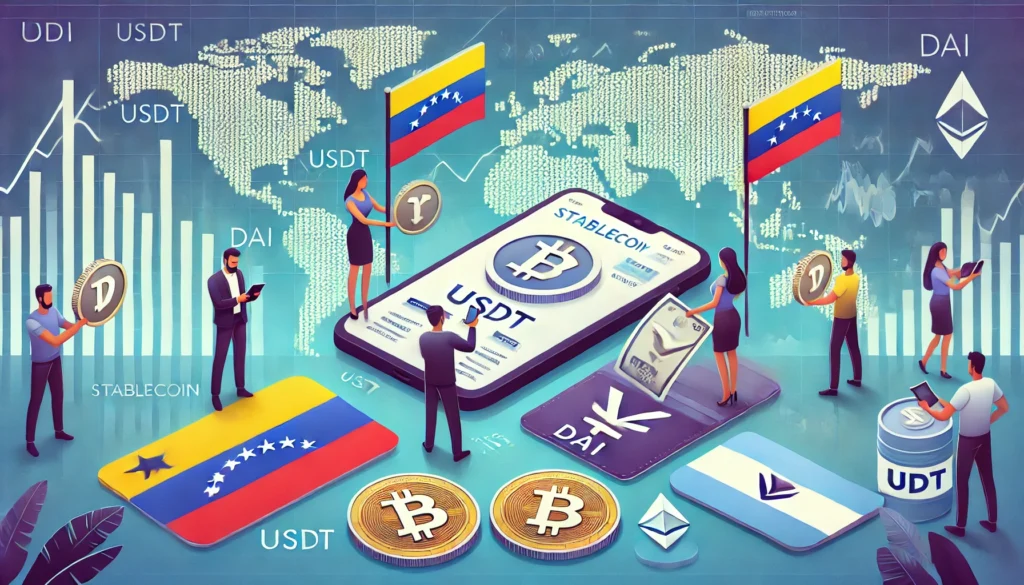
Introduction
Emerging markets often face economic challenges such as inflation, currency devaluation, and limited access to traditional financial systems. In such environments, stablecoins have emerged as a promising solution. Pegged to stable assets like the U.S. dollar or gold, stablecoins combine the benefits of cryptocurrencies with the stability of fiat currencies, providing financial inclusivity and resilience during economic turmoil. This article explores the growing role of stablecoins in emerging markets, their benefits, use cases, and the challenges they face.
Understanding Stablecoins
Stablecoins are a type of cryptocurrency designed to maintain a stable value. They achieve this stability through:
- Fiat Collateralization: Backed by reserves of fiat currencies like USD or EUR (e.g., USDC, USDT).
- Commodity Collateralization: Pegged to tangible assets like gold (e.g., PAX Gold).
- Algorithmic Mechanisms: Stabilized through supply and demand adjustments via smart contracts (e.g., DAI).
This stability makes stablecoins particularly useful in volatile economic environments, where local currencies can rapidly lose value.
Economic Turmoil in Emerging Markets
Emerging markets are often characterized by:
- High Inflation Rates: Countries like Venezuela, Zimbabwe, and Argentina have experienced hyperinflation, eroding the value of local currencies.
- Currency Devaluation: Weak currencies make international trade and savings challenging.
- Limited Financial Access: A significant portion of the population remains unbanked, with no access to traditional financial systems.
These challenges highlight the need for alternative financial solutions, where stablecoins can play a transformative role.
Benefits of Stablecoins in Emerging Markets
Protection Against Inflation
Stablecoins, pegged to stable assets like the U.S. dollar, provide a hedge against inflation, allowing individuals to preserve their wealth despite the devaluation of local currencies.
Financial Inclusion
With just a smartphone and internet access, individuals can store, send, and receive stablecoins, bypassing traditional banking infrastructure.
Cross-Border Transactions
Stablecoins facilitate fast, low-cost international remittances, a critical use case in emerging markets heavily reliant on remittance inflows.
Support for Local Businesses
Businesses can accept stablecoins as a payment method, reducing their reliance on unstable local currencies and high transaction fees from traditional payment processors.
Real-World Use Cases
Case Study 1: Venezuela
Hyperinflation in Venezuela has led citizens to adopt stablecoins like USDT to store value and transact. Platforms like Binance P2P allow Venezuelans to trade stablecoins directly, bypassing local currency instability.
Case Study 2: Nigeria
In Nigeria, where currency restrictions and inflation persist, stablecoins provide a reliable way to store wealth and conduct international trade. Local platforms like Bundle Africa facilitate stablecoin transactions.
Case Study 3: Argentina
Argentine citizens frequently use DAI and USDC to safeguard their savings from the peso’s devaluation. These stablecoins are widely traded on local crypto exchanges.
Challenges to Stablecoin Adoption in Emerging Markets
Regulatory Uncertainty
Governments in emerging markets often lack clear regulations for cryptocurrencies, creating uncertainty for stablecoin users and providers.
Limited Awareness
Many people in emerging markets are unfamiliar with stablecoins and how to use them effectively.
Infrastructure Gaps
Reliable internet access and digital literacy are prerequisites for stablecoin adoption, which can be limited in some regions.
Dependence on Fiat Reserves
Fiat-collateralized stablecoins depend on centralized reserves, which can be vulnerable to mismanagement or government intervention.
The Future of Stablecoins in Emerging Markets
Increased Adoption
As awareness grows and infrastructure improves, stablecoins are likely to gain wider acceptance in emerging markets.
Partnerships with Traditional Institutions
Collaborations between stablecoin issuers and local banks or payment providers can bridge the gap between traditional and digital finance.
Stablecoin Innovation
Algorithmic stablecoins and decentralized finance (DeFi) platforms may provide innovative solutions to address regulatory and infrastructure challenges.
Conclusion
Stablecoins are playing an increasingly vital role in emerging markets amid economic turmoil. By offering stability, accessibility, and efficiency, they empower individuals and businesses to navigate inflation, devaluation, and financial exclusion. While challenges such as regulatory uncertainty and infrastructure gaps remain, the potential of stablecoins to transform economies in crisis is undeniable. As adoption and innovation continue, stablecoins could become a cornerstone of financial resilience in emerging markets.
Relevant Resources
- Chainalysis: Insights on cryptocurrency adoption.
- Binance: Platforms facilitating stablecoin transactions.
- World Bank: Data on financial inclusion and emerging market economies.